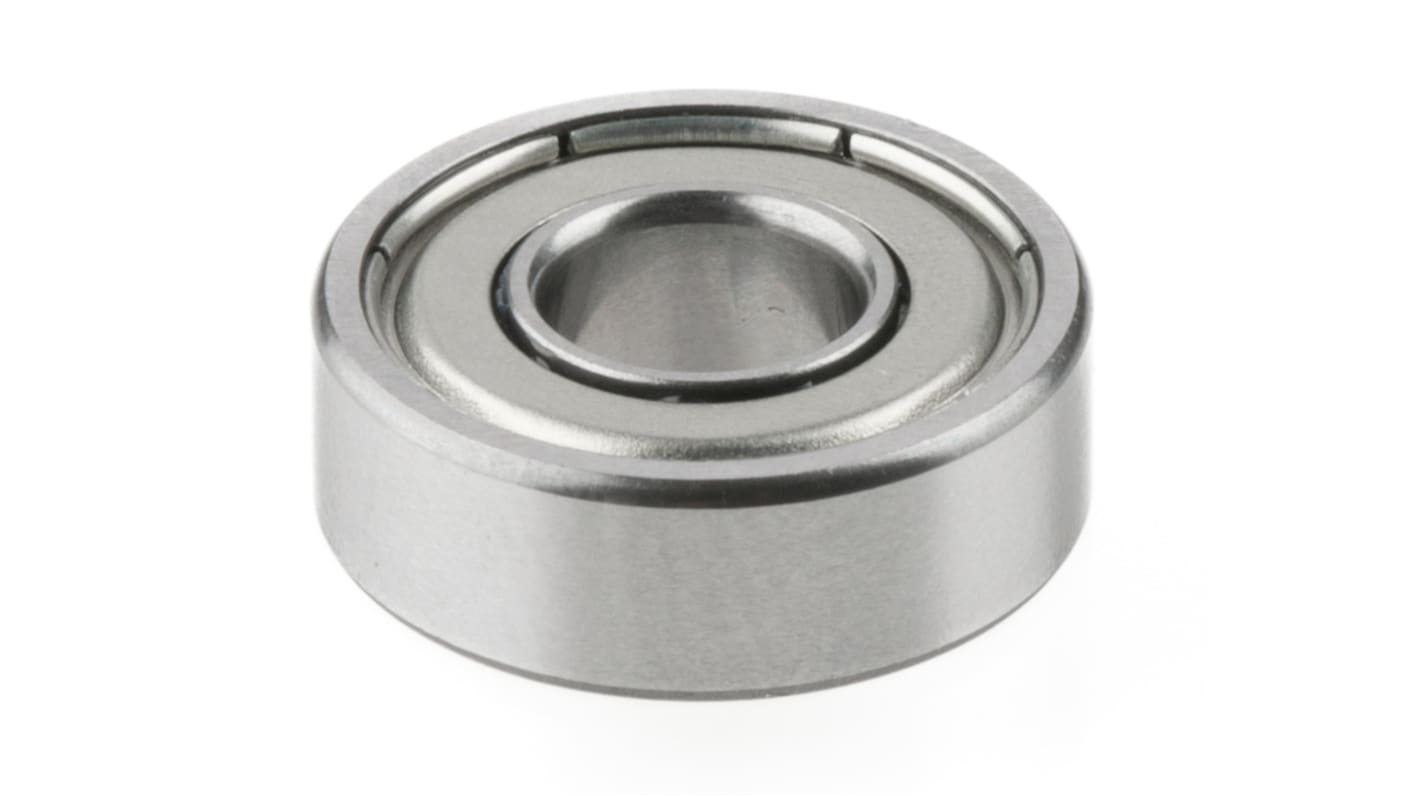SKF 628/5-2Z 1 Row Ball Bearing - 5 mm ID, 11 mm OD
- RS Stock No.:
- 207-8232
- Mfr. Part No.:
- 628/5-2Z
- Brand:
- SKF

Subtotal (1 unit)*
£12.17
(exc. VAT)
£14.60
(inc. VAT)
FREE delivery for orders over £50.00
In Stock
- 32 unit(s) ready to ship
- Plus 6 unit(s) ready to ship from another location
- Plus 80 unit(s) shipping from 22 December 2025
Need more? Click ‘Check delivery dates’ to find extra stock and lead times.
Units | Per unit |
|---|---|
| 1 + | £12.17 |
*price indicative
- RS Stock No.:
- 207-8232
- Mfr. Part No.:
- 628/5-2Z
- Brand:
- SKF
Specifications
Technical Reference
Legislation and Compliance
Product Details
Find similar products by selecting one or more attributes.
Select all | Attribute | Value |
|---|---|---|
| Brand | SKF | |
| Product Type | Ball Bearing | |
| Inside Diameter | 5 mm | |
| Outside Diameter | 11 mm | |
| Race Width | 4mm | |
| Cage Material | Sheet Metal | |
| Ball Material | Steel | |
| End Type | Shielded | |
| Number of Rows | 1 | |
| Static Load Rating | 143kN | |
| Dynamic Load Rating | 468N | |
| Series | 628/5-2Z | |
| Bore Type | Parallel | |
| Standards/Approvals | No | |
| Limiting Speed | 60000rpm | |
| Distrelec Product Id | 30409842 | |
| Race Type | Plain | |
| Bearing Type | Single Row Deep Groove Ball | |
| Select all | ||
|---|---|---|
Brand SKF | ||
Product Type Ball Bearing | ||
Inside Diameter 5 mm | ||
Outside Diameter 11 mm | ||
Race Width 4mm | ||
Cage Material Sheet Metal | ||
Ball Material Steel | ||
End Type Shielded | ||
Number of Rows 1 | ||
Static Load Rating 143kN | ||
Dynamic Load Rating 468N | ||
Series 628/5-2Z | ||
Bore Type Parallel | ||
Standards/Approvals No | ||
Limiting Speed 60000rpm | ||
Distrelec Product Id 30409842 | ||
Race Type Plain | ||
Bearing Type Single Row Deep Groove Ball | ||
SKF Deep-Groove Ball Bearing, 5mm ID, 11mm OD - 628/5-2Z
Choose this shielded deep-groove ball bearing from SKF for the reliable support of axial and radial loads in either direction. Its high-carbon chromium bearing steel balls deliver enhanced strength and performance, while the advanced raceway reduces friction for higher speed capacity. This unit's precision components ensure reduced noise and minimal vibration, meaning it can work at high and very high speeds.
• Dynamic load rating of 0.468kN and static load rating of 0.143kN for a versatile range of industrial uses
• Stainless steel balls resist corrosion if exposed to moisture or chemicals
• Easy mounting for greater convenience
• Double-shielded to keep out dirt and debris, reducing maintenance needs
Applications
• Agricultural equipment
• Industrial automation
• Conveyor systems and handling
• Household appliance manufacturing
What's the difference between a dynamic load and a static load?
A dynamic load rating measures the maximum load a bearing can tolerate at room temperature when the contact surfaces are in motion. It's used to determine the basic rating life of the bearing. Static load rating, on the other hand, measures the maximum load the bearing can tolerate at room temperature when not in motion before the bearing becomes damaged.
Related links
- SKF W 638/5-2Z 1 Row Ball Bearing - 5 mm ID, 11 mm OD
- SKF 638/5-2Z 1 Row Ball Bearing - 5 mm ID, 11 mm OD
- SKF W 627/5-2Z 1 Row Ball Bearing - 5 mm ID, 8 mm OD
- SKF 619/5-2Z 1 Row Ball Bearing - 5 mm ID, 13 mm OD
- FAG 685-2Z-HLC 1 Row Deep Groove Ball Bearing - 5 mm ID, 11 mm OD
- NMB DDLF1150ZZRA5P24LY121 1 Row Ball Bearing - 5 mm ID, 11 mm OD
- SKF 618/5 1 Row Ball Bearing - 5 mm ID, 11 mm OD
- NMB DDL1150ZZMTRA5P24LY121 1 Row Ball Bearing - 5 mm ID, 11 mm OD


